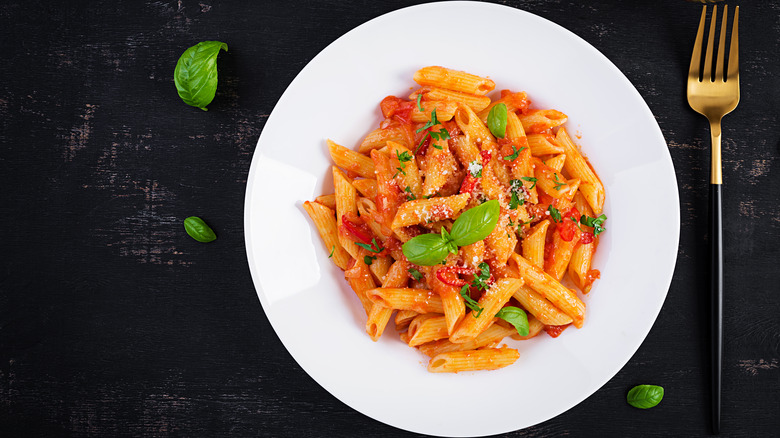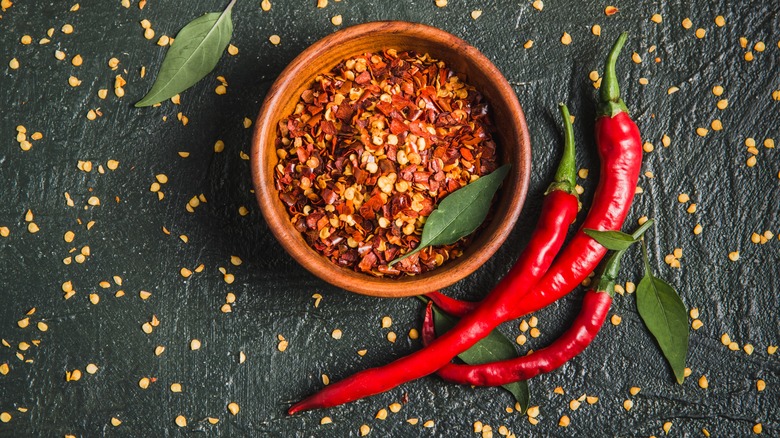The Simple Ingredient That Gives Arrabbiata Sauce Its Iconic Spice
While you can probably guess the key ingredients in some pasta sauces, like vodka and tomato, others are a little murkier at first glance. If you've ever had penne arrabbiata, you know it's quick to whip up, full of pantry ingredients, and beloved for its spicy kick. So where does the sauce get its signature burst of heat? In sticking with the pantry ingredients, arrabbiata sauce in the U.S. is typically made with simple red pepper flakes.
While you may throw a dash in other types of pasta sauces for a little kick, an arrabbiata sauce recipe can use up to two teaspoons of red pepper flakes. In Rome, however, where the sauce originally comes from, hot red peppers are traditionally used for heat instead. In fact, the copious amount of spice is the reason arrabbiata sauce got its name. "Arrabbiata" means "angry" in Italian, which is the exact emotion the pepper is projecting onto your tongue when you take a bite — if we had to guess. The full Italian name is "sugo all'arrabbiata" or arrabbiata sauce.
If you take out the flakes or peppers, the rest of the ingredients essentially make up a simple tomato sauce. A classic recipe uses parsley, olive oil, garlic, salt, Pecorino Romano, and plenty of San Marzano tomatoes. The key, as with most Italian food, is to use the freshest ingredients possible.
Red pepper flakes bring the heat
Of course, here in the U.S., there are plenty of slight variations on a traditional arrabbiata sauce recipe beyond adding red pepper flakes. San Marzano tomatoes are ideal since they're considered the cream of the tomato crop — the Protected Designation of Origin (DOP) ones are grown in a specific region in Italy and are known to be sweet with a potent flavor. But any can of whole peeled tomatoes can do the trick if you can't track these down, and some recipes add tomato paste to intensify the flavor even more.
You may also see added ingredients like sugar, Parmesan, shallots, butter, lemon juice, Italian seasoning, black pepper, basil, onion, and even red wine. In some cases, the sauce is also used as a base for a different pasta sauce with meat or veggies. However, more traditional recipes from Italy use Pecorino Romano because its sharpness pairs well with the spicy red pepper flakes — not Parmesan, which is thought to cancel out the heat. Onion is also omitted in simpler versions because it can make the sauce too heavy. One essential element that separates arrabbiata sauce from the rest, however, is the spicy kick, and for that, you'll need red pepper flakes.

